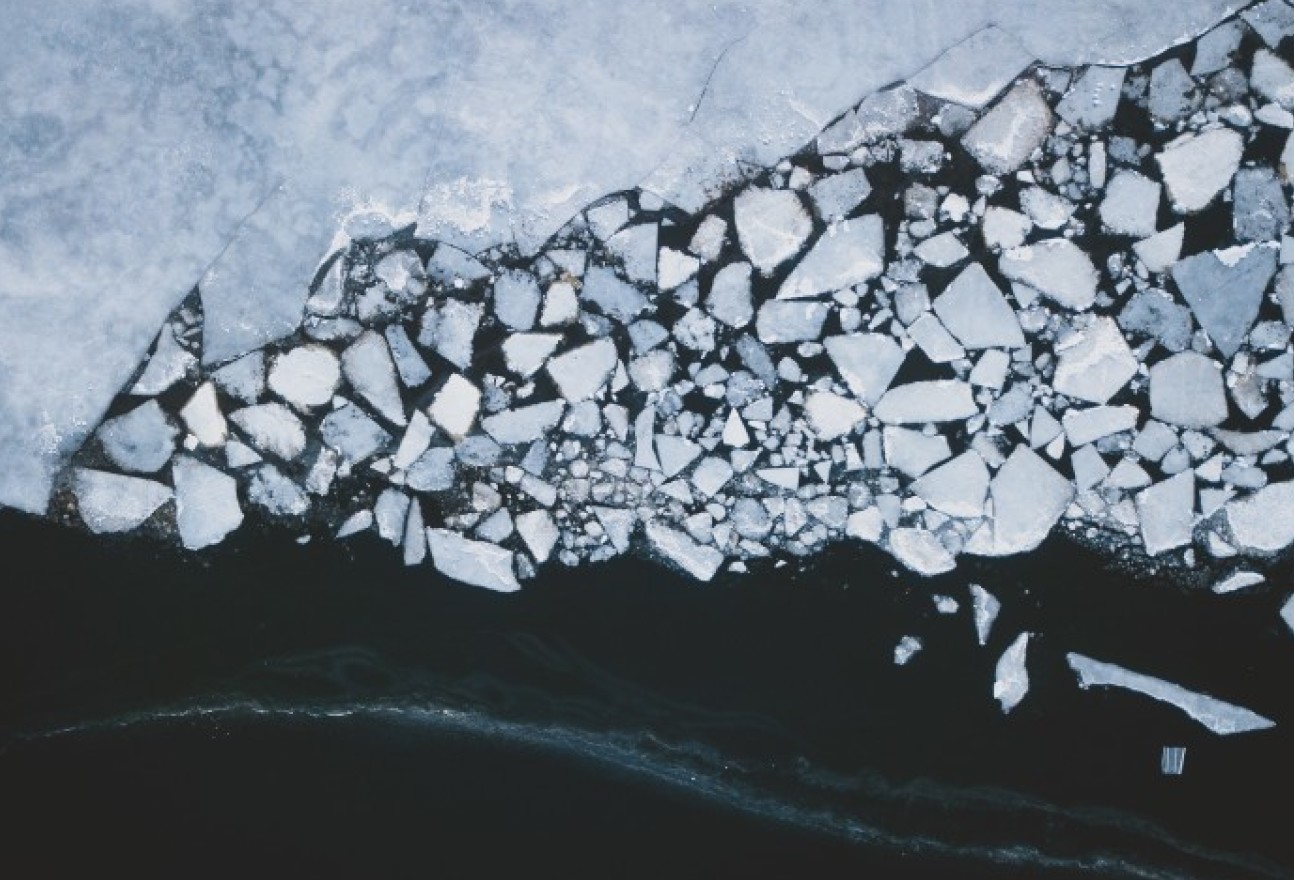

Here’s a batch of fresh news and announcements from across Imperial.
From an artistic exploration of physics at the tiniest scale, to nanoparticle treatments for osteoporosis, here is some quick-read news from across the College.
Nature’s subtle connections painted large

Imperial Artist Geraldine Cox’s colourful oil paintings, comprising tens of thousands of elements, are featured in the March issue of Physics Today, published by the American Institute of Physics.
The paintings answer a question Geraldine had about physics at the tiniest scale. The beautiful interference pattern seen when individual photons of light interfere appears to vanish when an atom is used to find out which way each photon went, so Geraldine asked: where does the interference go? The painting shows how the lost pattern is recovered by combining measurements made on the photon with those made on the atom.
“I like to think of the paintings as magical carpets,” says Geraldine. “Nature encourages us to remember the beautiful, subtle and important connections between things.”
Find out more about Geraldine’s work with Imperial physicists on her Finding Patterns website.
STEM for Britain

Five early-career researchers form Imperial presented their research at the annual STEM for Britain parliamentary poster competition this week, and one took home the top prize in his category.
Benjamin Lewis, from the Department of Chemistry, won the Gold Award in the Chemistry category for his research: ‘G-Quadruplexes: Unravelling the next knot in the DNA story’.
The other Imperial finalists were:
- Nura Mohamed, National Heart & Lung Institute, in the Biological and Biomedical Sciences category, for: ‘In vivo assessment of the nanoformulation sil@nanomil-89 in a monocrotaline model of pulmonary arterial hypertension’.
- Jan Kronqvist, Department of Computing, in the Mathematical Sciences category, for: ‘Convex mixed-integer nonlinear optimisation’.
- Daniel Platt, Department of Mathematics, in the Mathematical Sciences category, for: ‘Machine learning with symmetries’.
- Joseph van Batenburg-Sherwood, Department of Bioengineering, in the Engineering category, for: ‘Jamvent: A robust ventilation approach for covid-19 and beyond’.
Read more on the STEM for Britain website.
Clean Fuels Challenge
 Imperial academics Dr Ifan Stephens, Department of Materials, and Professor Magda Titirici, Department of Chemical Engineering, along with the postdoctoral researcher, Dr Jesús Barrio Hermida, have won funding from National Research Council Canada to take part in the Materials For Clean Fuels Challenge program.
Imperial academics Dr Ifan Stephens, Department of Materials, and Professor Magda Titirici, Department of Chemical Engineering, along with the postdoctoral researcher, Dr Jesús Barrio Hermida, have won funding from National Research Council Canada to take part in the Materials For Clean Fuels Challenge program.
The project is aiming to develop sustainable nature-inspired ways of producing ammonia and ethylene. Dr Stephens said: “The current synthesis of both these chemicals from fossil fuels results in CO2 emissions equivalent to the global aviation industry. “We envision that in the future it will be possible to synthesise both ammonia and ethylene electrochemically by running on renewable electricity. This would allow us to eliminate the colossal emissions currently produced.”
The project is initially funded for two years and involves several Canadian and global collaborators including the University of Toronto and the University of British Columbia.
Coldwater oil recovery
 Drilling and fracking for oil under the seabed, as well as oil spills, produces 100 billion barrels of oil-contaminated wastewater each year by releasing tiny oil droplets into surrounding water. To combat this, Imperial researcher Dr Pavani Cherukupally of the Department of Chemical Engineering had previously designed a sponge to help soak up this oil, and has now improved upon the design.
Drilling and fracking for oil under the seabed, as well as oil spills, produces 100 billion barrels of oil-contaminated wastewater each year by releasing tiny oil droplets into surrounding water. To combat this, Imperial researcher Dr Pavani Cherukupally of the Department of Chemical Engineering had previously designed a sponge to help soak up this oil, and has now improved upon the design.
Cleaning oil-contaminated in ultracold environments is challenging due to wax crystallisation and the high viscosity of the crude oil, but this new version of the sponge is designed with wax-compatible coating and removes 95-99% of oil. The sponge can then be rinsed with a mild solvent called heptol for re-use.
The researchers say their sponge designs could revolutionise cold water technologies and improve circular economy metrics in the oil industry.
Antioxidant nanoparticles

Imperial and King Mongkut’s University of Technology have developed new nanoparticles which could pave the way for a new osteoporosis treatment.
One of the triggers of osteoporosis is overproduction of reactive oxygen species (ROS), which can cause bone-forming cells (osteoblasts) to die and lead to weak, porous bones. In in vitro experiments the nanoparticles, called Ce@MSNs, helped reduce the amount of ROS by ‘scavenging’ them from bones, reducing oxidative stress and boosting bone formation.
The researchers, led by Dr Alessandra Pinna of the Department of Materials, say the ability of these particles to remove damaging ROS and impart bone-forming abilities highlights their potential therapeutic value for treating osteoporosis without using current drugs with undesirable side effects.
–
Want to be kept up to date on news at Imperial?
Sign up for our free quick-read daily e-newsletter, Imperial Today.

Article text (excluding photos or graphics) © Imperial College London.
Photos and graphics subject to third party copyright used with permission or © Imperial College London.
Reporters
Andrew Youngson
Communications Division

Caroline Brogan
Communications Division

Contact details
Email: press.office@imperial.ac.uk
Show all stories by this author
Hayley Dunning
Communications Division

Contact details
Email: press.office@imperial.ac.uk
Show all stories by this author
Stephen Johns
Communications Division

Contact details
Tel: +44 (0)20 7594 9531
Email: s.johns@imperial.ac.uk
Show all stories by this author




Leave a comment
Your comment may be published, displaying your name as you provide it, unless you request otherwise. Your contact details will never be published.